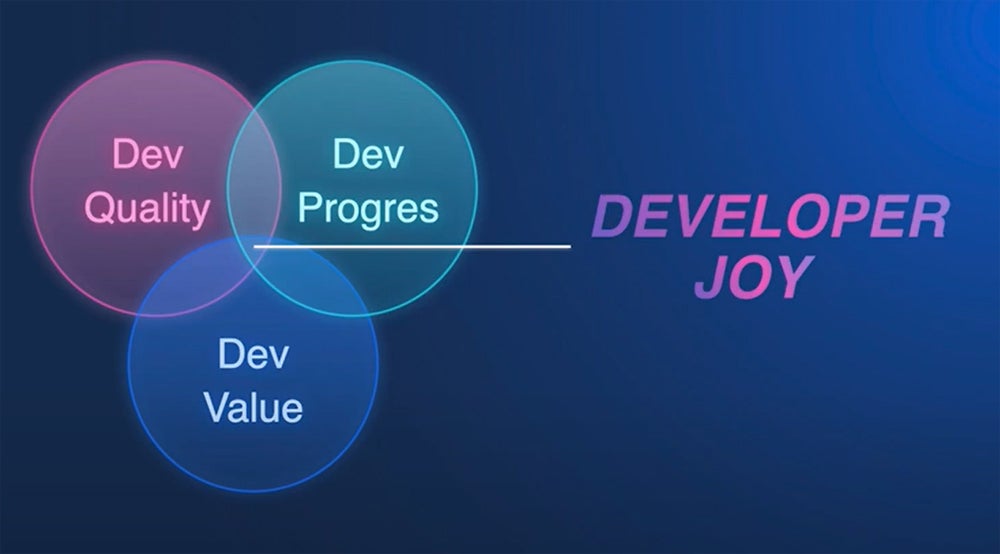Australia’s Atlassian: Measuring Software Developer Productivity Is Missing the Point

- by Admin
- August 2, 2024

Developer productivity is essential to Atlassian.
The Australian tech firm comprises approximately 5,000 engineers worldwide and is home to a number of globally competitive software products for work teams. Its success depends on engaging developers and shipping great products.
However, Atlassian thinks measuring developer productivity is ineffective. Instead, the company prefers to align with a broader initiative to enhance developer experience called “developer joy.” The idea is simple: Happy developers will ultimately be more productive.
Atlassian’s problem with measuring developer productivity
Atlassian believes productivity is difficult to measure and can be counterproductive.
In a blog post, Andrew Boyagi, DevOps evangelist at Atlassian, said he understands why businesses want to measure developer productivity. With pressures on IT and business leaders to ship digital products or features or manage digital transformations, these companies want to demonstrate return on investment in people and technology, he explained.
But he said developer productivity is difficult to measure. Popular measurements past and present have included lines of code produced, tasks moved to the done column, story points estimated in a sprint or DORA metrics like software deployment frequency and cycle times.
Atlassian DevOps advocate Sven Peters said these measures do not actually measure productivity. He said measurements like lines of code or deployment frequency can be gamed, story points are estimates and neither measure positive outcomes for customers.
Productivity measures are also problematic considering development roles now involve much more than coding and shipping new features. Peters said developers’ cognitive load now includes more time both running and building the software.
Developer experience: A new way to boost productivity?
There is growing interest in how developer experience affects productivity. DevEx focuses on creating the right environment for productive work primarily through better tools and technologies, shifting away from DevOps’ emphasis on productivity tools and frameworks.
Deloitte named DevEx a top tech trend for 2024. The firm said developers today are “in high demand but hindered” by productivity challenges like configuration, tool integration and debugging, which impede activities and features that add value to their business.
Three elements of Developer Experience excellence
Analysis from Deloitte found there were three key elements of a great DevEx proposition:
- Platforms and tools: Fewer numbers of better, standardised platforms and tools make it easier and more enjoyable for developers to work. Harness’ State of Developer Experience Survey found too many tools in use, increasing context switching and slowing onboarding.
- Ways of working and flow: Great DevEx needs “clear, continuous processes” so developers can accomplish tasks in a “flow” while avoiding friction from disconnected systems or poor governance. This includes advanced team workflow management and DevSecOps.
- Talent experience: Developers work best when part of a “fun, productive and diverse” community and culture; are engaged in continuous learning; and have chances for mobility and career advancement through continuous progression and development opportunities.
Atlassian’s productivity approach: Maximise ‘developer joy’
Atlassian believes developers who are happy and satisfied with their work are also likely to be productive. This means that, rather than waste time and resources measuring productivity, effort is better spent investing in and maximising what it terms “developer joy.”
Atlassian said developer joy has a number of inputs but includes two main ingredients:
- Developer experience: Atlassian summarises DevEx as being how engineers feel about the tools, frameworks and platforms they use to create software.
- Engineering culture: Atlassian defines engineering culture as being “how work gets done.” It includes elements such as organisational values, norms and decision-making.
Atlassian’s Peters offered further insight into what creates joy for Atlassian’s developers, including:
- Dev quality: Developers enjoy work more if they focus on great quality code.
- Dev progress: The ability to make progress quickly without blockers satisfies developers.
- Dev value: Joy and pride come from creating value and impacting customer businesses.

What does ‘developer joy’ look like?
Atlassian’s focus on creating and measuring developer joy has yielded myriad improvements across different product teams. As outlined in a presentation given by Peters, these have included initiatives from teams working on Atlassian’s JIRA, Confluence and Trello products.
JIRA
Their JIRA teams put in place a suite of new guidelines for code reviews so that receiving feedback and making code improvements are more enjoyable for developers. Guidelines include “assuming competence” of the developer and giving constructive, reasoned feedback.
JIRA product and development teams have also improved collaboration to avoid rework. All team members are now involved at every stage of the lifecycle to varying degrees — from the product “wonder” phase through the development and customer “impact” stages.

Confluence
Atlassian’s Confluence team built an internal tool for detecting “flaky” code tests, which hold up processing of pull requests. After identifying a flaky test, the tool flags it for review via an automated Slack message, so developers are not distracted by time-consuming debugging tangents.
Another team reduced the time taken for pull requests to be processed, and the code merged with the main branch from three to 1.2 days. They did this by sending automated reminders to team members to review pull requests in the morning before they started their own work.
Trello
A Trello team devised a method to integrate quality assurance into their workflow. They created a QA Kick-Off, where QA assistants inform developers about the exploratory tests they would conduct. This allows developers to assume primary ownership of QA, with support from the QA assistants.
How IT leaders can improve their teams’ developer joy
Ask developers for suggestions
Atlassian makes it clear that businesses, including tech companies, serious about improving their developer experience should ask developers themselves. Atlassian said developers are more than willing to provide feedback on the problems they have to improve the joy they have at work.
Atlassian offers a free Developer Experience Survey that teams can set up and run digitally or in-person to measure their developer experience. The survey can help to gain feedback on elements like “sustainable speed to ship,” “waiting time,” “execution independence” and more.
Make time for improving joy
Atlassian decided to free up 10% of developer time to allow them to find ways to improve “developer joy” in the business. This sees developers at Atlassian spending about 55% of their time “changing the business” by developing products and features for its customers, 35% of their time “keeping the lights on” through maintenance-style work and 10% of their time on developer joy.
Treat each company and team uniquely
Peters advises DevOps leaders to treat each company and team as having a unique path to developer joy. He said that copying the approaches of other businesses or teams may not work. Instead, work on improving joy within a team’s unique tools and processes.
Add context to productivity metrics
Organisations should not solely rely on the limited story provided by productivity metrics like deployment frequencies. Rather, they should seek to add fuller context to these measures, and add new ones that impact productivity, like the joy of developer teams.
Developer joy could be the future for tech talent
Finding a tech workplace that champions joy over productivity measurement may seem like a dream to developers. In fact, for many developers worldwide working at large tech companies, safeguarding wellbeing can be hard enough, let alone fostering genuine joy in work.
Australia’s Atlassian may be on to something, though. As Boyagi suggests in his Atlassian blog post, companies that focus on DevEx could outperform competitors, including attracting top talent. “I know which type of company I would prefer to work for,” Boyoagi wrote.
The Latest News
-
December 23, 2024Championship three-peat reward for ‘clinical’ Aussies | cricket.com.au
-
December 23, 2024Australian tennis star Purcell takes on voluntary provisional suspension for breaking anti-doping rules
-
December 23, 2024‘Back myself and be fearless’: Konstas lives by mantra in first hit | cricket.com.au
-
December 23, 2024Wimbledon champion accepts ban for anti-doping breach just months after winning US Open
-
December 23, 2024Australian tennis star Purcell takes voluntary suspension over anti-doping breach





